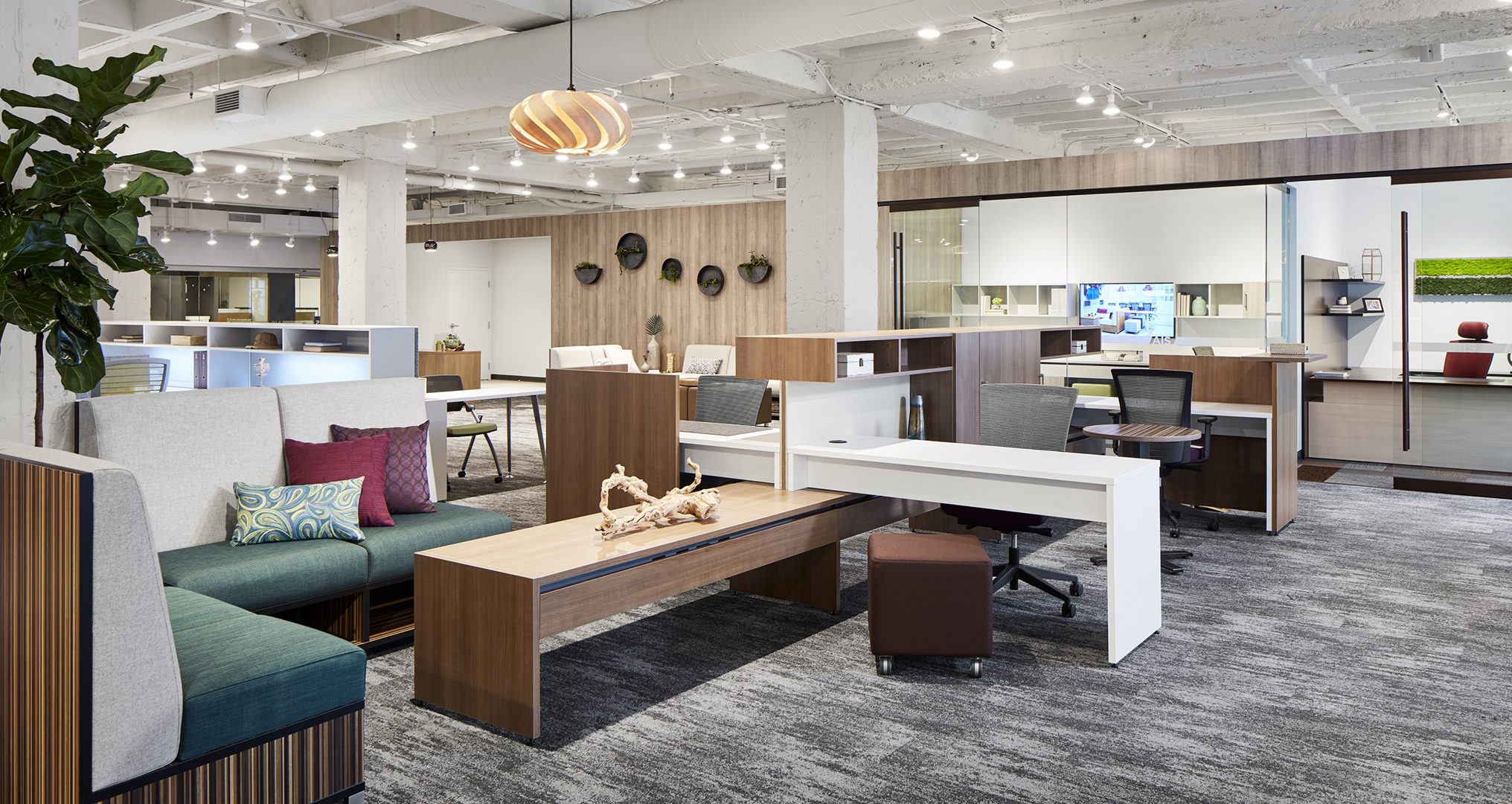Since the 1960s, cubicles have been the preferred office desk for the masses. Business owners quickly realized they could cram more people into a smaller space using cubicles. Now, when you think of any high-rise office setting, you likely picture rows and rows of these. However, as more and more things modernize, the office setting is no different. In fact, the more we learn about employee satisfaction in the workplace, the more we realize that the cubicle shouldn’t always be the answer.
In recent years, benching systems and other open-concept office designs have taken over. Larger corporations and companies find that when their employees can collaborate in open spaces, it leads to better performance, higher productivity, increased job satisfaction, and even expedites solutions to customer problems. But what exactly is the difference between the two? While iSpace Office Interiors can offer you both, there are some key distinctions to be made. So, let’s take a look at some of the advantages and disadvantages of both options.
What is a cubicle?
A cubicle is a partially enclosed office workspace that’s separated from neighboring desks by partitions. These partitions are usually made of some high-quality foam material and stand about five to six feet tall. The purpose of the partition is to isolate office employees and managers from the sights and noises of an open workspace. The hope is that employees are more productive when closed off, but as we’re learning, that’s not always the case.
What is a Benching System?
On the flip side, benching systems are long shared work surfaces without any actual partition or separation. You might find benching systems with minimal paneling, but they are usually just small decorative dividers down the center of the workstation. They still aim to give each employee a designated workspace, but the open-air consent is meant for more collaboration and communication between users. If you’ve ever stepped foot inside a computer lab or writing lab on a college campus, you’ve seen benching systems.
What are the pros and cons of cubicles?
Debating a cubicle set up? Then let’s look at some of the pros and cons of this layout:
Pros:
- More storage space for files and personal belongings
- Employees can concentrate on their work
- Offers a more peaceful environment
- More sanitary than sharing open spaces or other desk areas
Cons:
- Difficulty collaborating with others and assessing team members
- Outdated office design and feel
- Might actually reduce productivity since employees can surf the web unnoticed
- Do require a significant amount of square footage’
What are the pros and cons of benching?
If a more open and collaborative space is in your sights, let’s take a look at some of the pros and cons of a benching system.
Pros:
- Roomier and more welcoming office environment
- Promotes cooperation and partnerships between co-workers
- More layout flexibility
- Can make your office space look larger
Cons:
- Could also lead to a decline in productivity for your more social employees
- Lack of storage options
- Difficult to avoid noise from neighbors
- Lack of privacy for both employees and managers
Are you ready to make your choice?
If you know which desk option you’d like to go with but aren’t quite sure how to fit it into your space, then let iSpace Office Interiors help! We have a knowledgeable team of interior designers that can take your vision and make it a reality. Our free space planning and project management give your company’s office space a whole new look. We can also provide you with all the furniture you’ll need, whether it be for private office suites, cubicles, benching systems, or a conference room. To get started, give us a call at (317) 694-7197.

